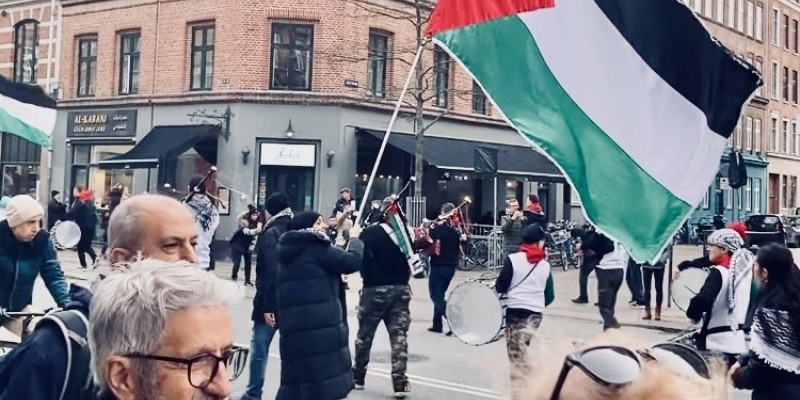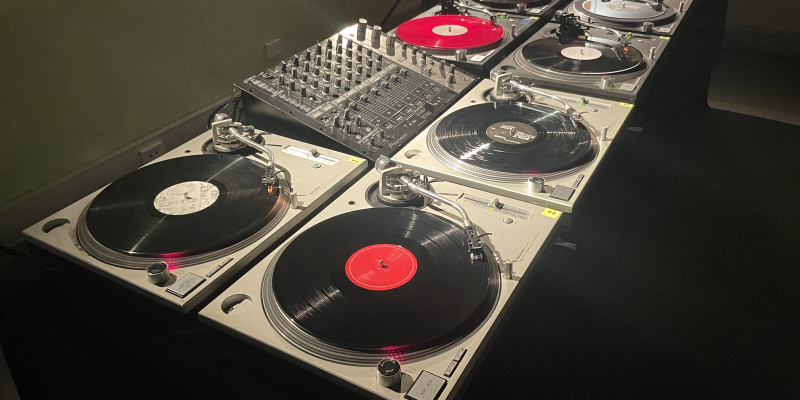Air Canada (2023). New safety video. Accessed November 28, 2023, https://www.youtube.com/watch?v=E_7HwX-C6ws&t=245s&ab_channel=AirCanadaAir.
Alert Ready (2023). Emergency alert system. Accessed November 29, 2023, https://www.alertready.ca/.
Ahmed, S. (2014). Willful subjects. Durham, NC: Duke University Press.
Attali, J. (1985). Noise: The political economy of music. Minneapolis: University of Minnesota Press.
Benjamin, W. (2007 [1935]). »The work of art in the age of mechanical reproduction«, in Arendt, H. (ed). Illuminations: essays and reflections, Zohn, H. (trans.). New York: Schocken Books, pp. 217-252.
Bitter, J. (2023). »Sampling as ethnographic method/remixing Gulu City.« American anthropologist, 125(1), pp. 23–35.
Boudreault-Fournier, A. (2019). Aerial imagination in Cuba: Stories from above the rooftops. Abingdon, Oxon: Routledge.
Buck-Morss, S. (1992). »Aesthetics and anaesthetics: Walter Benjamin’s artwork essay reconsidered«. October, 62, pp. 3-41.
Coulthard, L. (2013). »Dirty sound: Haptic noise in new extremism«. In Vernallis, C. Herzog, A., and Richardson, J. (eds.). The Oxford Handbook of Sound and Image in Digital Media, Oxford: Oxford University Press, pp. 115-126.
Deleuze, G. and Guattari, F. (1987 [1980]). A Thousand Plateaus: Capitalism and schizophrenia. Translated by B. Massumi. Minneapolis: University of Minnesota Press.
Edworthy, J., Loxley, S., & Dennis, I. (1991). »Improving auditory warning design: Relationship between warning sound parameters and perceived urgency«. Human Factors, 33(2), pp. 205-231.
Fahy, R. F., Proulx, G., & Aiman, L. (2012). »Panic or not in fire: Clarifying the misconception«. Fire and materials, 36(5-6), pp. 328-338.
Feld, S. & Brenneis, D. (2004). »Doing anthropology in sound«. American Ethnologist, 31(4), pp. 461–474.
Goddard, M. et al. (2012). Reverberations: The philosophy, aesthetics and politics of noise. London: Continuum Intl Pub Group.
Ingold, T. (2007). »Against soundscape«. In Carlyle, A. (ed.). Autumn Leaves: Sound and the Environment in Artistic Practice. Paris: Double Entendre, pp. 10-13.
Kapferer, B. (2010). »Introduction: In the event – Toward an anthropology of generic moments«. Social analysis, 54 (3), pp. 1–27.
Larkin, B. (2013). »The Politics and Poetics of Infrastructure«, Annual review of anthropology 42 (1), pp. 327–343.
Laruelle, F. (2011). »The Generic as Predicate and Constant: Non-Philosophy and Materialism«. In L. Bryant, N. Srnicek and G. Harman (eds.). The Speculative Turn Melbourne, Australia: re.Press, pp. 237-260.
Lynch, E. E. (2023). Locative tourism applications: a sensory ethnography of the augmented city. London: Routledge.
MacLochlainn, S. (2023). The copy generic: how the nonspecific makes our social worlds. Chicago: The University of Chicago Press.
Marcus, G. (2000). Para-Sites: A Casebook against cynical reason. Chicago: University of Chicago Press.
Marks, L. (2013). »A noisy brush with the infinite: Noise in enfolding-unfolding aesthetics«. In Vernallis, C., Herzog, A., and Richardson, J. (eds.). The Oxford handbook of sound and image in digital media. Oxford: Oxford University Press, pp. 101-114.
Massumi, B. (2015). Ontopower. Durham, NC: Duke University Press.
Peterson, M. (2021). Atmospheric noise: The indefinite urbanism of Los Angeles. New York, USA: Duke University Press.
Pickering, H. and Rice, T. (2017). »Noise as ‘sound out of place’: Investigating the link between Mary Douglas’ work on dirt and sound studies research«. Journal of Sonic Studies, https://www.researchcatalogue.net/view/374514/374515.
Povinelli, E. (2016). Geontologies: A requiem to late liberalism. Durham and London: Duke University Press.
Rice, T. (2008). »‘Beautiful Murmurs’: Stethoscopic listening and acoustic objectification«. The senses & society, 3 (3), pp. 293–306.
Rutten, E. & de Vos, R. (2023). »Trash, dirt, glitch: The imperfect turn«. European Journal of Cultural Studies, 26(1), pp. 3–13.
Scarlatti, A. (2005). »All’arme sì accesi guerrieri«. On Cecelia Bartoli and Musiciens du Louvre-Grenoble: Opera proibita [CD]. London: Decca.
Schulze, H. (2016). »Resistance and resonance: A political anthropology of sound«. The senses & society, 11(1), pp. 68–81.
Serres, M. (1982). The parasite. Translated by L. Schehr. Baltimore: The Johns Hopkins University Press.
Shange, S. (2019). Progressive dystopia: Abolition, antiblackness, and schooling in San Francisco. Durham, NC: Duke University Press.
Simmel, G. (1950). »The metropolis and mental life.« In K. Wolff (ed.). The Sociology of Georg Simmel. Glencoe, Illinois: The Free Press, pp. 409-424.
Simpson, A. (2014). Mohawk interruptus: Political life across the borders of settler states. Durham, NC: Duke University Press.
Sterne, J. (2019). »Multimodal Scholarship in World Soundscape Project Composition: Toward a Different Media-Theoretical Legacy (The WSP as OG DH)«. In M. Droumeva and R. Jordan (eds.). Sound, Media, Ecology. London: Palgrave Macmillan, pp. 85-109.
Truth, S. (1851). »Ain't I A Woman?«. Delivered at the 1851 Women's Convention, Akron, Ohio. Retrieved from Internet Modern History Sourcebook, Fordham University, accessed April 1, 2024, http://www.fordham.edu/halsall/mod/sojtruth-woman.asp.
Sweet, E. and Escalante, S. (2017). »Engaging territorio Cuerpo-Tierra through body and community mapping: A methodology for making communities safer«. Gender, Place & Culture, 24(4), pp. 594–606.
Taussig, M. (1992). The Nervous System. New York: Routledge.
Yanagisawa, E. (2021). »Methods and issues of sonic ethnography as a practical research method based on field recordings«. Japanese Review of Cultural Anthropology, 22 (2), pp. 85–93.
Zaragocin, S., and Caretta, M. (2021). »Cuerpo-Territorio: A decolonial feminist geographical method for the study of embodiment«. Annals of the American Association of Geographers, 111(5), pp. 1503–18.








